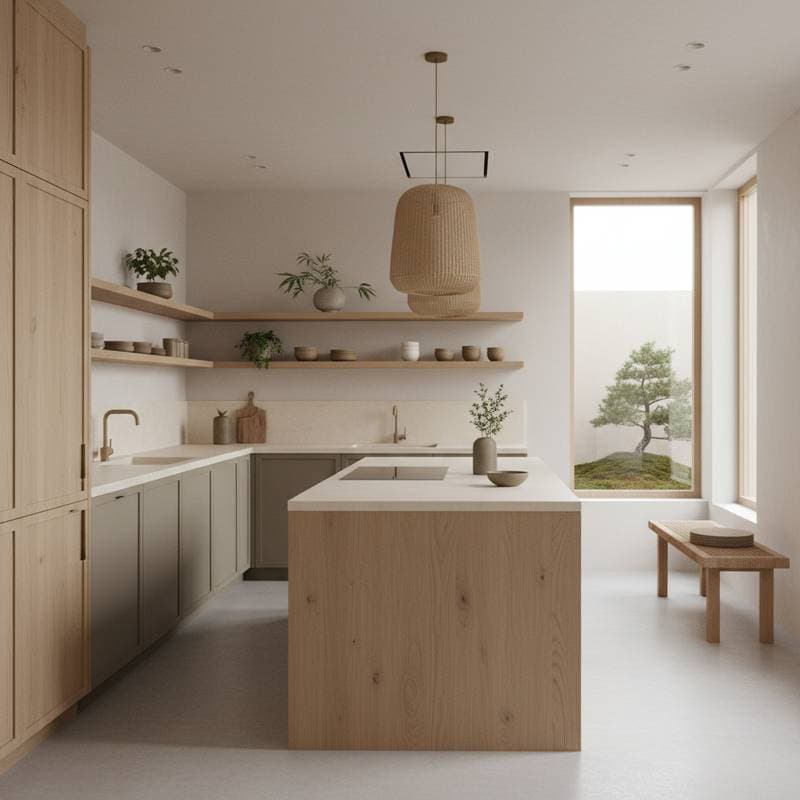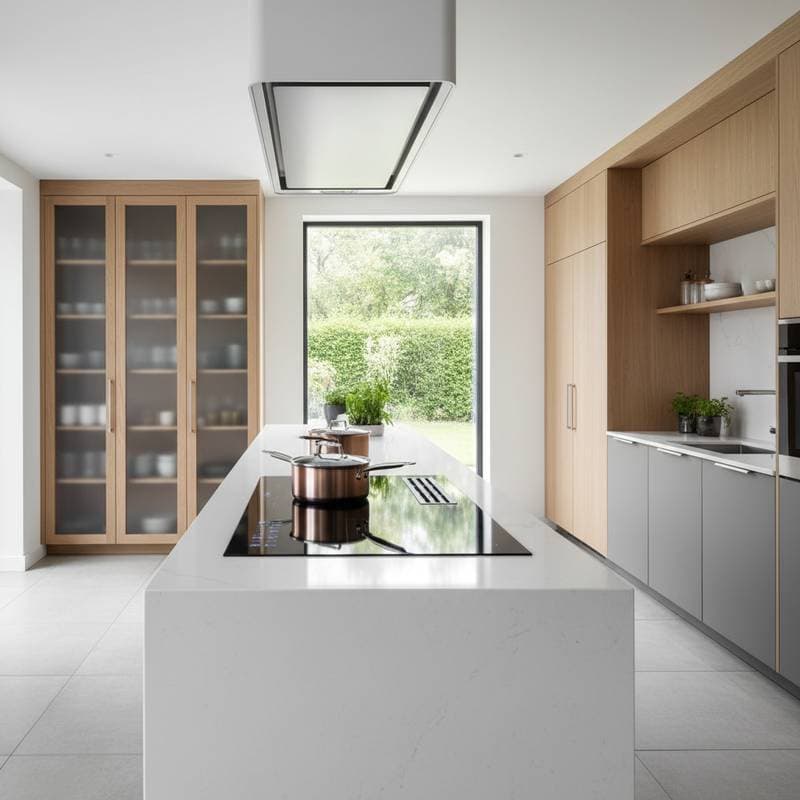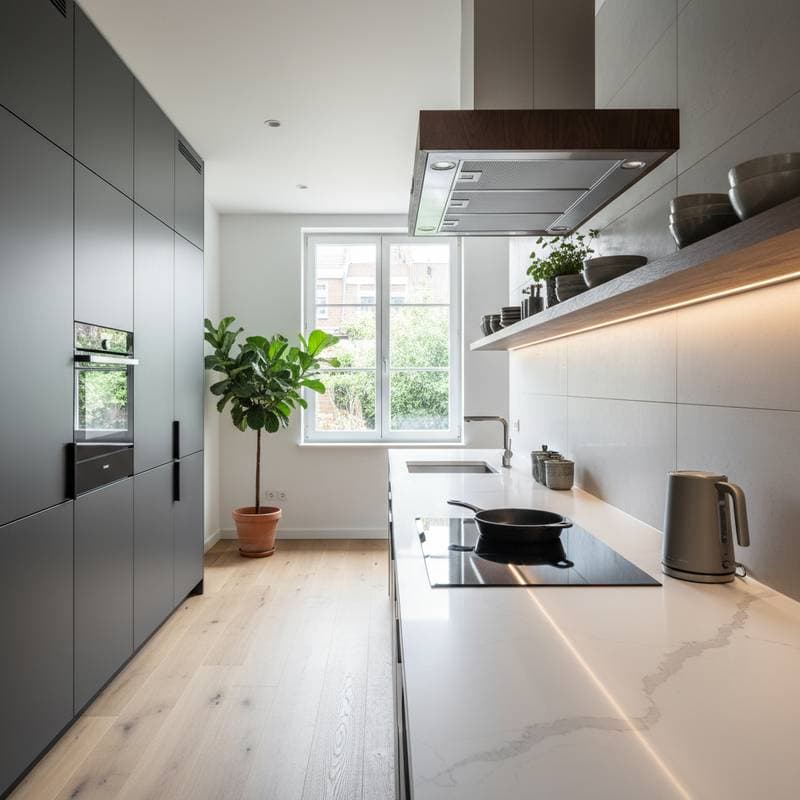Induction Cooktops Become Mandatory in New Home Construction
New home construction standards are evolving to mandate induction cooktops, replacing traditional gas ranges. This requirement, effective in many regions starting in 2025, promotes cleaner air, enhanced safety, and superior energy efficiency in residential kitchens. Homeowners, builders, and designers stand to benefit from this transition, which supports innovative and sustainable kitchen layouts.
Understanding Induction Technology
Induction cooktops operate through electromagnetic fields that directly heat compatible cookware, bypassing the cooking surface itself. This method ensures rapid heating and precise temperature regulation while keeping the cooktop cool, which minimizes burn risks and simplifies cleanup. Compared to conventional electric coils or gas burners, induction models reduce energy loss by up to 90 percent, aligning with broader goals for sustainable home design.
The sleek, flush-mounted design of induction cooktops integrates seamlessly with modern countertops, such as quartz or granite. Builders appreciate the absence of visible elements, which allows for uninterrupted surfaces and easier maintenance. For families, the technology provides peace of mind through features like automatic shut-off and child safety locks.
Transitioning from Gas Appliances
Regulatory changes in several jurisdictions aim to phase out gas connections in new builds to address indoor air pollution and carbon footprints. Gas stoves emit pollutants like nitrogen dioxide, which can exacerbate respiratory issues, whereas induction cooking produces no combustion byproducts. This shift supports public health initiatives and complies with updated building codes focused on environmental responsibility.
Users accustomed to gas may initially notice differences in heat distribution, but induction offers comparable responsiveness. For instance, it achieves boiling points in under two minutes for a quart of water, surpassing many gas setups. Training resources from manufacturers help bridge the learning curve, ensuring smooth adoption in professional and home environments.
Selecting Induction Cooktops by Budget
Induction options span a wide price spectrum, making them accessible for various project scales. Basic models begin at approximately $300 and provide essential functions like multiple heat zones and timer settings. Premium versions, priced from $1,500 upward, incorporate advanced features such as Wi-Fi connectivity and adaptive power management.
Consider these categories when planning a purchase:
- Portable Units: Ideal for temporary setups or apartments, these single-burner devices cost $50 to $100 and require no installation beyond a standard electrical outlet.
- Standard Built-In Models: Suited for most new constructions, these range from $600 to $1,500 and support four to five burners with customizable interfaces.
- Professional-Grade Systems: Designed for high-volume use, these integrate with smart home ecosystems and start at $2,000, often including expandable zones for large cookware.
Regardless of selection, all induction cooktops demand ferromagnetic pots and pans; verify compatibility by checking if a magnet adheres to the base.
Enhancing Kitchen Design with Induction
The compact profile of induction cooktops enables fluid countertop designs without the constraints of gas lines or hood vents. Architects can create expansive, barrier-free islands that facilitate social cooking in open-plan spaces. Pairing induction with downdraft ventilation maintains air quality while preserving aesthetic openness.
To maximize visual appeal, position the cooktop within a monolithic slab countertop, where the glass surface blends invisibly when powered off. Complementary elements, such as integrated warming drawers or adjacent prep zones, elevate functionality. In larger kitchens, modular configurations allow reconfiguration to suit evolving needs, from family meals to entertaining.
Recommended Brands and Features
Reputable manufacturers offer reliable induction solutions tailored to different preferences. Bosch provides durable, European-engineered units with precise simmer controls. GE Profile excels in user-friendly interfaces, including voice-activated adjustments via compatible assistants.
Samsung models feature flexible cooking zones that adapt to pan size, while Frigidaire Gallery emphasizes affordability with built-in diagnostics for troubleshooting. Key features to evaluate include power levels (typically 10 to 15 settings), residual heat indicators, and energy-efficient modes that reduce utility costs by 20 to 30 percent over gas alternatives.
Professional Insights on Implementation
Design professionals view this mandate as an opportunity to streamline workflows and innovate layouts. Eliminating gas infrastructure simplifies plumbing and electrical planning, potentially cutting installation time by 25 percent. Thinner countertops become feasible without supporting heavy burners, opening possibilities for lightweight materials like recycled composites.
In practice, induction facilitates bolder color schemes and textures, as ventilation demands decrease. Builders report fewer compliance hurdles with energy standards, while end-users enjoy lower long-term operating expenses. This evolution positions kitchens as efficient, health-conscious hubs within the home.
Embracing Induction for Everyday Benefits
Integrating induction cooktops enhances daily routines through unmatched precision and convenience. Spills evaporate quickly on the cool surface, and the lack of ambient heat keeps kitchens comfortable year-round. Energy savings translate to reduced bills, with many models qualifying for rebates under green building incentives.
Safety remains a cornerstone, as the system deactivates instantly upon removing cookware, preventing accidents. Culinary enthusiasts discover nuanced control for techniques like sous-vide or searing, rivaling professional equipment. As adoption grows, induction redefines cooking as an intuitive, eco-conscious practice that aligns with forward-thinking lifestyles.









